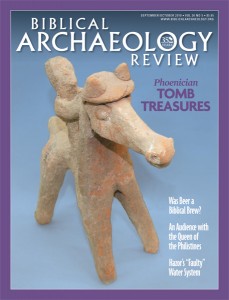Archaeological Views: The Mystery Remains: Who Leaked the Scroll Pictures to BAS?

I teach a graduate seminar in Judaism in Antiquity at the University of Virginia, and we naturally cover the Dead Sea Scrolls. It is then that I regale my students with my own brush with archaeological history. It concerns a dramatic moment in the history of the scrolls and involves a mystery that has gone increasingly unnoticed.
At the 1993 Jerusalem trial in which Israeli scholar Elisha Qimron sued my father, BAR editor Hershel Shanks, I served as his unofficial translator. I was a 23-year-old graduate student at the time.
The lawsuit had been instituted after the Biblical Archaeology Society (BAS) published a two-volume set of photographs of unpublished Dead Sea Scroll fragments. No one knew how the photographs had been obtained. But the trial concerned only the book’s foreword, which happened to have been written by my father. In the foreword, he explained why the publication of this two-volume set was such a momentous occasion: More than 45 years after the first scrolls had been discovered, thousands of fragments were still unpublished and unavailable to scholars; as a result, scholars wrestling with the obscurity of history could not avail themselves of important evidence from antiquity. With this publication, that would now change.
Already a library member? Log in here.
Institution user? Log in with your IP address.

